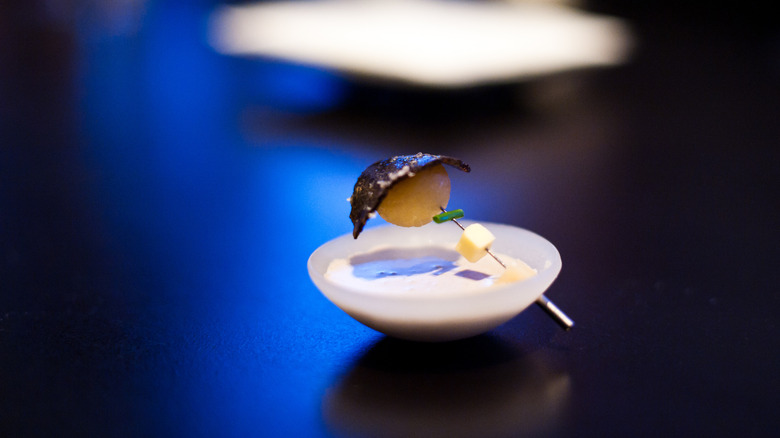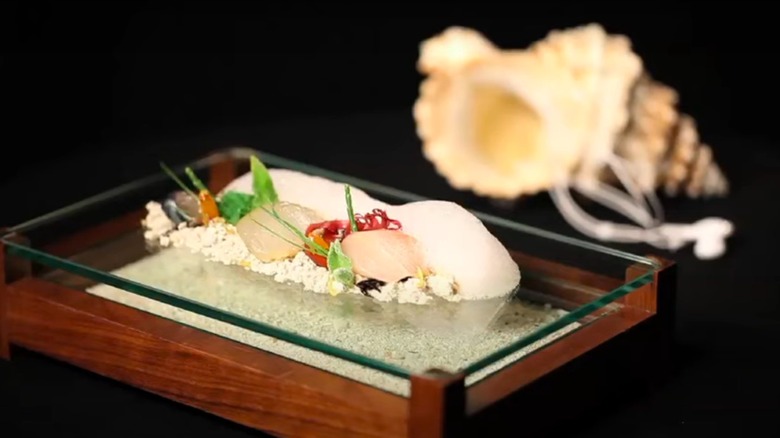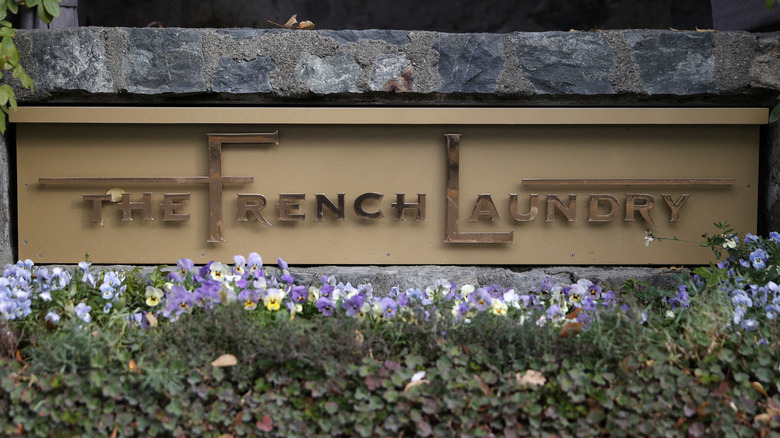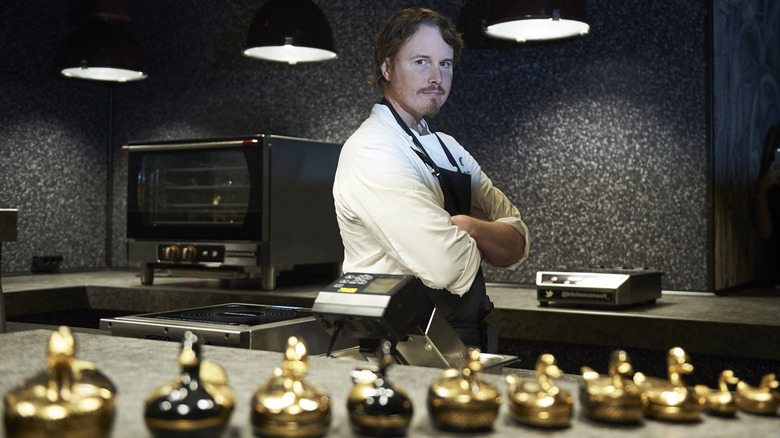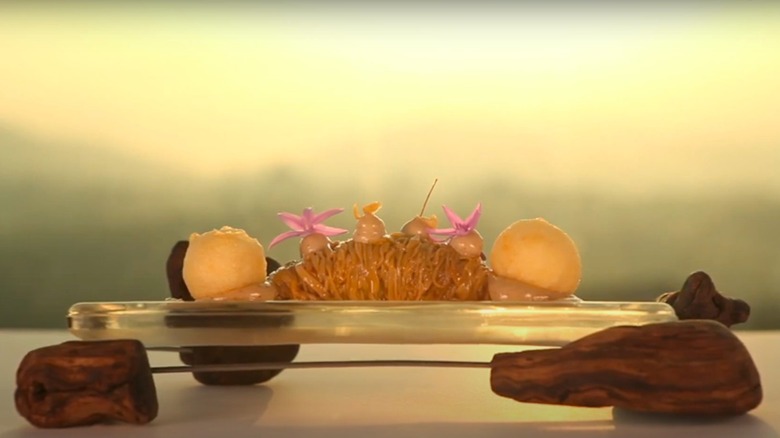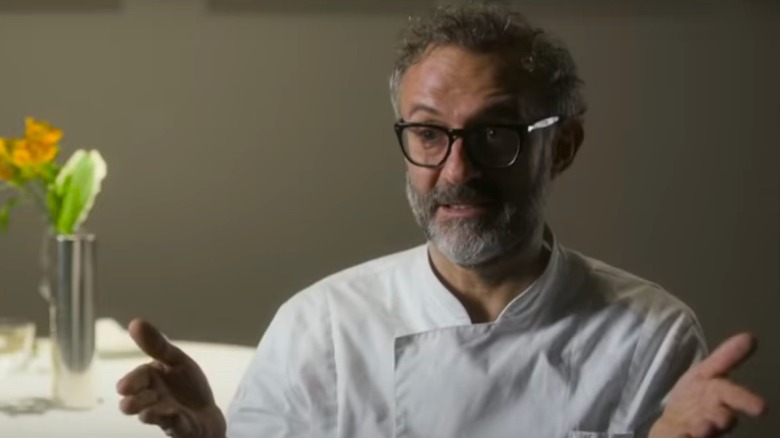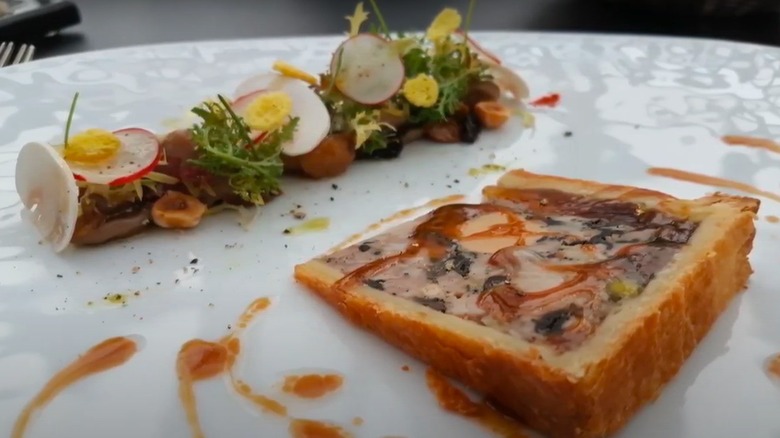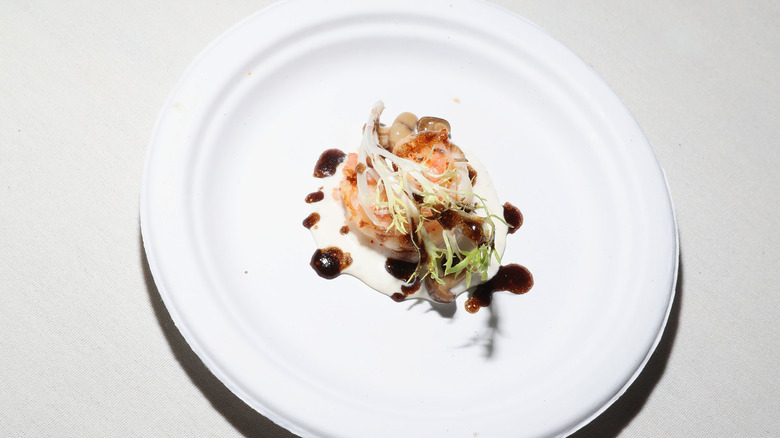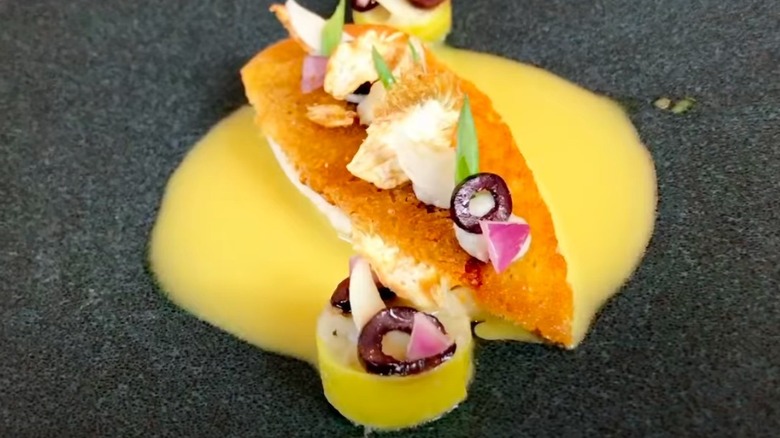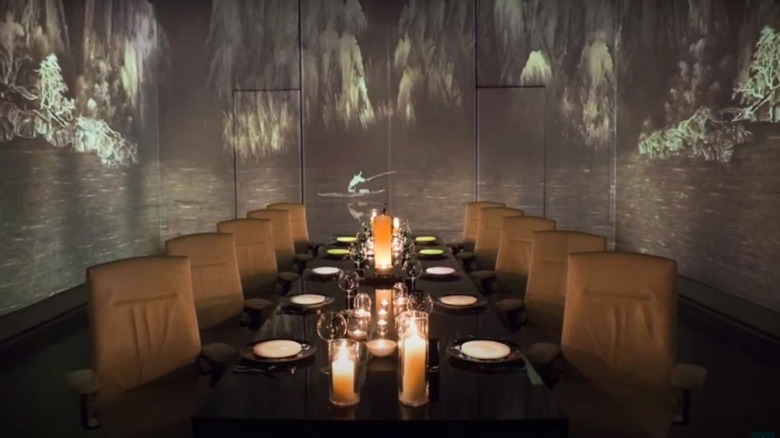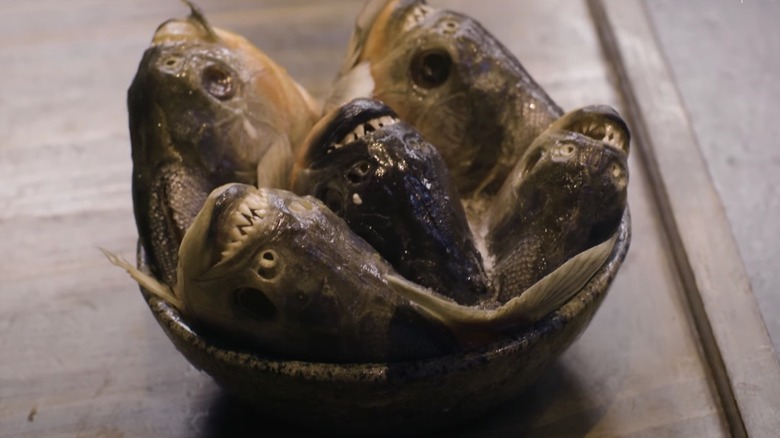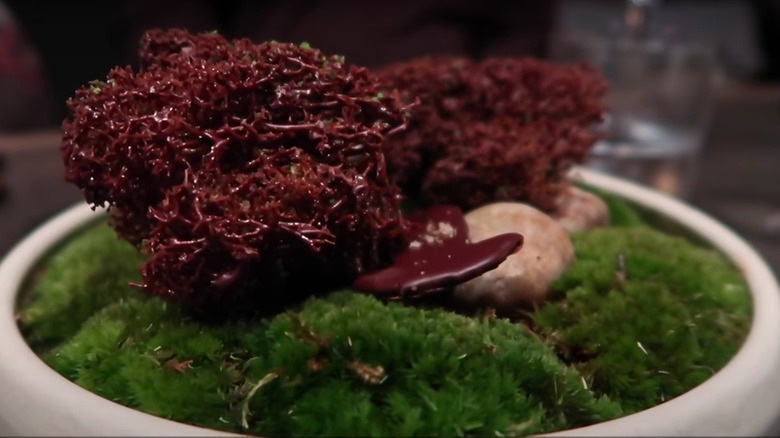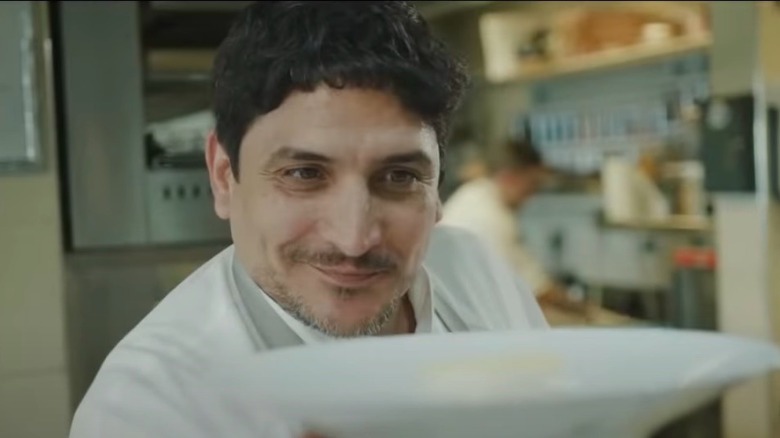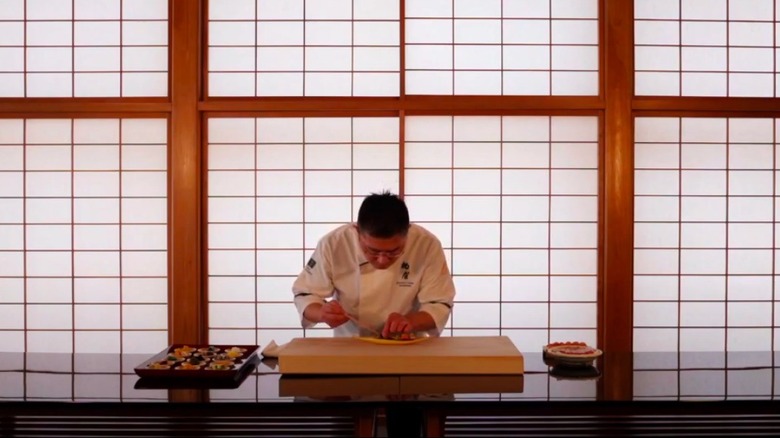Michelin-Starred Restaurants You Should Visit At Least Once
Since awarding its first stars back in 1926, the Michelin Guide rating system has remained the gold standard in the restaurant world. Earning Michelin stars, in fact, can put a restaurant on the culinary map, catapulting an inventive eatery to unforeseen levels of success. In the process, the talented, ambitious chefs behind those Michelin stars can become bona fide foodie superstars — just ask chef-turned-media mogul Gordon Ramsay how his life changed after his London-based Restaurant Gordon Ramsay amassed three Michelin stars.
Michelin star ratings have been awarded to establishments throughout the world, with these restaurants typically representing the cutting edge of the culinary arts. As one might expect, earning a Michelin star is no mean feat. Restaurants that attain them must then face the ongoing pressure of hanging onto those stars.
Meanwhile, Michelin stars continue to lead the way for hardcore foodies who devote themselves to seeking out unique dining experiences in far-flung locates around the globe. For anyone looking for some guidance when it comes to experiencing some of the world's best cuisine, read on to learn about some Michelin-starred restaurants you should eat at at least once.
The Fat Duck has been on the culinary cutting edge for decades
Chef Heston Blumenthal opened The Fat Duck in 1995 in a former pub in the British village of Bray in Berkshire. Blumenthal quickly established himself as a culinary adventurer, noted the Michelin Guide, landing the restaurant his first Michelin star in 1999. A second star was awarded in 2002, and a third in 2004, making The Fat Duck one of just three U.K. restaurants at the time to boast three Michelin stars.
Described by The Guardian as "the paradigm-shifting madcap molecular genius of British cooking," Blumenthal has continually pushed the envelope with his culinary work. In 2005, The Fat Duck was named the world's best restaurant by The World's 50 Best Restaurants.
If there's one dish that defines The Fat Duck, it's Heston's Sound of the Sea. Introduced in 2007, this thoroughly unique gastronomic delight places seafood sashimi atop a bed of edible tapioca "sand," accompanied by a conch shell containing a hidden iPod that plays a soundtrack of ocean sounds such as seagulls and waves buffering the shore. Explaining his culinary philosophy to Country & Town House, Blumenthal declared that "eating is a multi-sensory experience."
Thomas Keller's The French Laundry has become a foodie destination
In 1994, Thomas Keller opened The French Laundry in what was once a stone farmhouse in California's Napa Valley, taking his restaurant's name from the history of the building, which housed a steam laundry in the 1920s. Keller's venture has grown to become one of the world's most respected restaurants, earning three Michelin stars every year since 2007. No less an authority than the late Anthony Bourdain once described The French Laundry as "the best restaurant in the world, period" (via Secret San Francisco).
According to the Michelin Guide, "Classic French techniques are paired with wildly fresh ingredients in a setting that is a perfect storm of restaurant greatness." Anyone fortunate to obtain a reservation at The French Laundry can expect a meal that, per a reviewer for Food Republic, was "among the finest dining experiences of my life."
A 1997 review in The New York Times backed that up, declaring The French Laundry to be "the most exciting place to eat in the United States."
Chicago's Alinea led the molecular gastronomy movement
Chicago's Alinea opened in 2005 under the leadership of chef Grant Achatz, propelling the molecular gastronomy trend to bold, avant-garde new directions. Clearly not willing to rest on its laurels, in 2017 Alinea received three stars for its eighth consecutive year. The restaurant was likewise awarded three stars in the 2020 Michelin Guide, the only Chicago eatery to garner three stars that year.
In 2017, Insider ranked Alinea as the best restaurant in the world, thanks to Achatz and his team's inventive experimentation "with avant-garde dishes that showcase their molecular gastronomy skills."
Alinea's signature dish is arguably one of its oddest: a floating helium-filled dessert, made from dehydrated apples and sugar. The edible balloon is served with a pin, so diners can pop the treat in order to eat it. Alinea executive chef Mike Bagale, who created the dessert, told Eater that this was the dish he's most proud of. "I think it was a step forward in cuisine," said Bagale, admitting that "creating floating food" was an entirely new venture.
Spain's Azurmendi has been lauded as the world's most sustainable restaurant
When it comes to combining world-class cuisine with sustainability, Spanish restaurant Azurmendi is the ultimate. In fact, Forbes deemed chef Eneko Atxa Azurmendi's namesake establishment to be "the most sustainable restaurant in the world."
Set within a magnificent glass-walled structure in the Basque countryside, the Michelin Guide described the three-starred restaurant as being "worth a special journey" and "one of our most special places." As its website declared, Azurmendi is "the place where our culture, customs, and way of doing things walk together towards the future."
As Forbes noted, diners are ushered through a series of rooms, each with its own culinary characteristics. After enjoying "miniature delights" in a forest-themed room, guests are then taken into the kitchen, where Azurmendi himself creates his signature dish, in which the liquid within a raw egg is sucked out of the shell with a syringe. Steaming truffle broth is then injected within the shell, cooking the yolk. A third room represents the surrounding countryside, with liquid nitrogen used to recreate fog, before ending up in the main dining room.
Osteria Francescana twice held the distinction as the best restaurant in the world
Situated in Modena, Italy, Osteria Francescana was awarded its third Michelin star in 2012 and was named the best restaurant in the world in 2016 — and again in 2018. According to the Michelin Guide, the restaurant's cuisine is "light and well balanced with a focus on adding innovative touches to traditional recipes without being overly nostalgic."
The brainchild of chef Massimo Bottura, Eater credited Osteria Francescana's fame in culinary circles due to "juxtaposing Italian tradition with French sensibilities and unhinged avant-gardism."
This is certainly evident in what is arguably the restaurant's most famous dish, described in the menu as "an eel swimming up the Po River." In a review of the restaurant for The New Yorker, Jane Kramer described the sous vide eel as being "lacquered with a saba sauce, and served with creamy polenta and a raw wild-apple jelly."
Robuchon au Dôme offers world-class cuisine in a sky-high setting
Known for its casinos and opulent cuisine, the New York Daily News once dubbed China's Macau region as "Asia's Las Vegas." Sitting at the peak of Macau's many world-class restaurants is Robuchon au Dôme, situated within the glass dome that tops the towering Grand Lisboa Hotel. It shouldn't be surprising that the food is as superb as the setting, given that the restaurant was named after Joël Robuchon. Prior to his 2018 death, Robuchon once held 32 Michelin stars in a single year, a feat unmatched by any other chef before or since, according to NBC News.
Led by the vision of executive Julien Tongourian, noted the Michelin Guide, Robuchon au Dôme offers dishes that "are intricate, beautifully presented and deliver an array of intense flavors" — along with a wine cellar boasting 17,000 selections, the most extensive such collection in Asia (via Grand Lisboa Hotels).
According to a review in WBP Stars, diners can expect "traditional French haute cuisine of the absolute highest standard" while taking in the breathtaking view of Macau.
Le Bernardin offers luxury seafood at its finest
When Le Bernardin was first opened in New York City by French siblings Maguy and Gilbert Le Coze in 1986, the restaurant served nothing but fish, prepared simply and "with respect," according to the restaurant's website. After Gilbert's 1994 death, chef Eric Ripert came aboard and took Le Bernardin to a whole other level. In 2005, the restaurant was awarded three Michelin stars and has maintained them ever since.
As The World's 50 Best explained, Le Bernardin offers an array of tasting menus, some based on the degree of cooking applied to the food in question. The dishes infuse elements of global cuisine — particularly from Asia — with traditional French cooking techniques, resulting in such dishes as "kampachi sashimi with Niçoise olives and a Greek-inspired salad" and "seared octopus with tomatillo salsa and red wine-mole sauce."
While seafood remains Ripert's specialty, the Michelin Guide also gave accolades to his vegetarian tasting menu, which includes highly-prized meatless ingredients like morel mushrooms and black truffles.
Restaurant de l'Hôtel de Ville is worth the trip to Switzerland
Located in the Swiss municipality of Crissier, the Restaurant de l'Hôtel de Ville was first opened in 2012 by renowned chef Benoit VIolier. When VIoiler died in 2016, his widow, Brigitte, handed the reins to chef Franck Giovanni.
Under Giovanni's leadership, noted a review in Fodor's Travel, not only has the restaurant maintained its three Michelin stars, but the new chef has been instrumental in "propelling it to even higher accolades." This, as Fodor's pointed out, has been the result of Giovannini's knack for devising "imaginative combinations of flavors" along with an eye for "stunningly refined presentations."
While Fodor's also pointed to the importance of the local ingredients, the Michelin Guide praised Giovanni for his ability to oversee a team of 25 chefs, a feat of organizational work that's often overlooked in the artistic, high-minded world of haute cuisine.
Ultraviolet combines food and technology for a unique multi-sensory adventure
It would be beyond understatement to describe Shanghai's Ultraviolet as one of the world's most unique restaurants. In fact, the acclaimed establishment has taken dining in some trailblazing new directions by creating a multi-sensory experience in which delectable haute cuisine is only one aspect of the meal.
"The characteristic of Ultraviolet is to unite multi-sensorial technology with food," chef Paul Pairet declared in a New York Times video. According to Ultraviolet's website, the restaurant tells "a story in 20 courses," with each of those courses served in a completely different environment. This is achieved by an ever-changing soundtrack, with special music accompanying each dish, along with visual accompaniment projected on walls, even the addition of scents and "ambient utensils."
As the review in the Michelin Guide explained, the experience "will give you quite an adrenaline rush." While it may sound entirely gimmicky, a review in The New York Times insisted that Ultraviolet's "commotion is inextricable from the sense of wonder it stirs." The cost of taking part in the commotion is steep, setting diners back some $400 per person.
Peru's Central boasts a 17-course tasting menu
The culinary pride of the Peruvian capital of Lima, Central reflects chef Virgilio Martínez's passion for celebrating Peru's biodiversity through cuisine. As the Michelin Guide explains, "Peru is home to 84 of the world's 117 microclimates ranging from the Pacific Ocean to the Andean mountains, the Amazon rainforest, and even deserts." This gives Martinez a lot to work with.
The result, noted a review in Time, is a 17-course tasting menu that is organized by altitude, with each course representing the bounty of one of the country's unique ecosystems according to their particular elevations. This results in such courses that include scallops, piranha, and goat. The restaurant's three Michelin stars and the fact that Central was declared the sixth-best restaurant in the world in 2019 (via The World's 50 Best Restaurants) is a testament to how successfully Martínez has achieved his goals.
As Martínez explained in a video interview for Vice, "We're working with about 350 ingredients in the menu ... You are trying 350 ingredients in one experience."
Copenhagen's Noma defied conventions to become the world's best restaurant
It speaks volumes that chef René Redzepi's Noma has been named the best restaurant in the world no less than four times, according to The World's 50 Best. Those honors weren't achieved by playing it safe either, as the Michelin Guide says that Noma boasts "one of the most advanced" test kitchens on the planet.
A meal at Noma takes diners far outside culinary comfort zones. According to Insider, Redzepi serves up dishes that include unconventional ingredients foraged from the surrounding countryside, including such eyebrow-raising ingredients as ants and edible mold.
Diners can also expect to enjoy a vastly different experience depending on the time of year they visit Noma. Due to the restaurant's hyperlocal philosophy, only locally available ingredients are used, leading to menus that change with the season. For four months of the year, the focus is on seafood, while another four-month period features vegetables, and the final third of the year leans heavily on wild game.
Mirazur was rated the world's best restaurant in 2019
Situated in France's posh Côte d'Azur, Mirazur is a labor of love for chef Mauro Colagreco, an Argentine expat committed to growing his own vegetables and working to produce zero waste. This, he told the Michelin Guide, "allows us to return to the land what we have borrowed from it." Understandably, this philosophy is deeply embedded within the restaurant's menu, which the Michelin Guide described as a "unique and daily ode to aromatic plants, flowers, vegetables from his garden."
Mirazur became a sensation in 2019 when earned the coveted top spot on the The World's 50 Best restaurants list. As a CNN review explained, Colagreco takes a micro-level view of which ingredients are available. As a result, "the menu changes every single day," creating dishes so unique that even the most dedicated regulars don't expect to have a repeat of previous meals.
Tokyo's Den has reinvented traditional kaiseki cuisine
Japan is famed for its traditional kaiseki cuisine, a carefully curated dining experience attuned to the seasons. Tokyo's Den, under the leadership of chef Zaiyu Hasegawa, has taken the concept of kaiseki and turned it on its head, earning culinary accolades for the bold, yet playful inventiveness of its menu.
According to The World's 50 Best Restaurants, the Michelin-starred restaurant "offers an elevated, deeply personal take on Japanese home cooking," with Hasegawa basing his dishes on high-quality ingredients. As the Michelin Guide gushed, Den offers "a Tokyo twist on kaiseki cuisine for a new era." This is evident in some of Den's signature dishes, the Dentucky Fried Chicken, described by The World's 50 Best Restaurants as "probably the best chicken wings you will ever taste."
"The taste of home cooking is different for everyone," said Hasegawa on the Den website, "but yet it is all prepared with the same wish, which is to make others happy."
